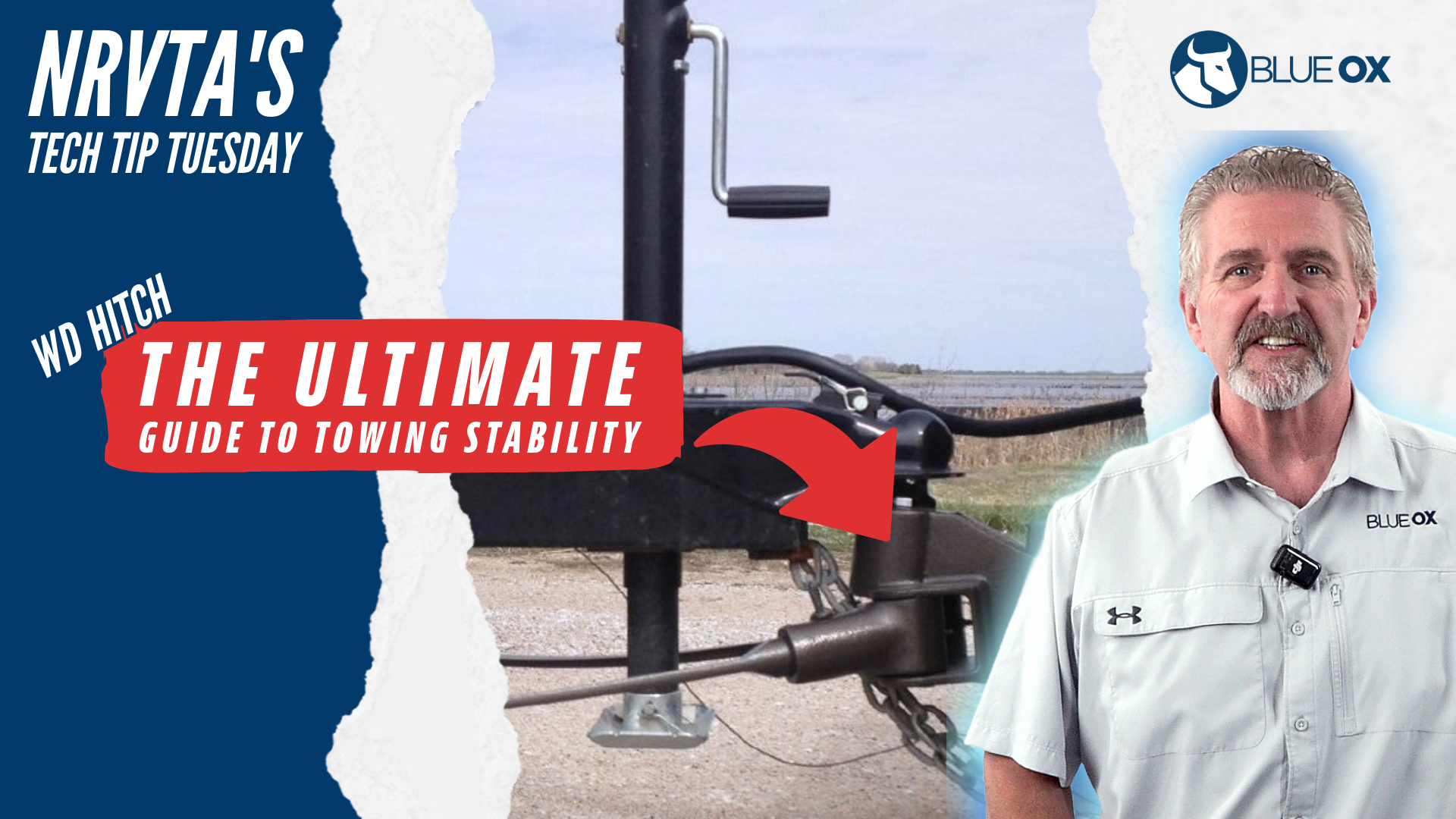Get your RV Technician Certification in as little as 5 weeks!

Welcome back to another Two-Minute Tech Tip Tuesday, brought to you by the National RV Training Academy (NRVTA)—the largest hands-on RV training school in America. This week, we’re focusing on something that affects nearly every RV owner who tows: trailer sway, uneven weight distribution, and the struggle for safe, confident driving.
Whether you’re towing a small camper or a full-size travel trailer, understanding the role of weight distribution—and choosing the right hitch—can mean the difference between white-knuckling every mile and enjoying a smooth, safe ride.
The Real Problem: Sway, Steering, and Stability
If your RV feels like it’s taking you for a ride instead of the other way around, you may be dealing with improper weight distribution between your tow vehicle and trailer. This usually starts when your vehicle and trailer aren’t level, which affects steering, braking, and ultimately causes dangerous sway.
When the trailer tongue is too low or too high, it:
- Unloads the front axle of your tow vehicle
- Causes light steering—similar to driving on ice
- Reduces braking power (your front brakes activate first!)
- Transfers too much weight to one axle on your trailer
- Increases sway and instability at higher speeds
The result? A tense, unsafe towing experience—and potential for accidents.
What Weight Distribution Hitches Really Do
Contrary to popular belief, a weight distribution hitch doesn’t reduce the tongue weight of your trailer. It redistributes that weight more evenly across the axles of both your tow vehicle and trailer, improving balance and road handling.
Think of it like a wheelbarrow: it’s heavy when full, but when you lift the handles, you transfer weight forward to the tire. That’s what a properly set up weight distribution hitch does for your trailer.
Meet the Blue Ox Lineup
Blue Ox offers two primary weight distribution hitch systems that help make towing safer and more manageable:
1. SwayPro Hitch
- Uses rotating latch brackets and heat-treated spring bars
- Offers the smoothest and quietest towing experience
- Reduces sway while distributing weight
- Flexible upgrade/downgrade options—just change the bars!
- Great for long-term RVers who want a customizable, lasting solution
2. TrackPro Hitch
- Features L-bracket mounts for the spring bars
- Slightly firmer ride, but still smooth and effective
- Also adjustable for different trailer sizes
- Excellent control in windy or uneven terrain
Both systems provide active suspension between your tow vehicle and trailer—dramatically reducing sway and bounce.
Setting Up Your Hitch: Height Matters
Getting the ball height right is key to safe towing. Here’s the rule of thumb based on your tow vehicle’s suspension type:
- Leaf Spring Trucks (like many pickups): Hitch ball should sit 1 inch higher than the trailer’s coupler height when level
- Coil Spring Vehicles (like SUVs): Set the ball 2–3 inches higher
This helps ensure your trailer doesn’t “dip” or “nose up” and overload one axle, both of which can cause sway and poor braking.
Real-World Cautionary Tale
A Ram 1500 owner recently purchased a 11,500 lb GVWR travel trailer—close to their vehicle’s 11,900 lb tow rating. After loading, the trailer weighed 11,200 lbs, and they couldn’t tow comfortably over 55 mph due to constant sway.
Turns out, they were within 500 lbs of exceeding the gross combined vehicle weight rating (GCVWR), even without people or gear in the truck. The solution? Either get a smaller trailer or upgrade to a more powerful tow vehicle.
Lesson: Always match your hitch, trailer, and vehicle with margin—not just the numbers on paper.
Tongue Weight Truths: Don’t Rely on Internet Myths
Most people assume tongue weight is 10% of the trailer’s GVWR. But that’s outdated. New trailer designs (especially with slide-outs) move axle positions, pushing tongue weight up to 15% of GVWR in many cases.
Example:
- 10,000 lb GVWR trailer
- Real-world tongue weight: 1,500 lbs, not 1,000 lbs
This matters when choosing both your trailer and hitch—always check the receiver hitch ratings on your vehicle for with/without weight distribution usage.
Final Thoughts
Towing should be enjoyable—not stressful or dangerous. A Blue Ox SwayPro or TrackPro weight distribution hitch helps ensure:
- Proper load balance
- Safer steering and braking
- Drastically reduced sway
- Longer life for your tow vehicle and trailer
Don’t let a poor towing setup ruin your RV experience. Take the time to calculate, measure, and invest in the right hitch system for your setup.
To learn more, visit BlueOx.com or check out hands-on towing and hitch training at NRVTA.
And that’s your Tech Tip!
Get Registered Today!
Talk to a student advisor to learn more!